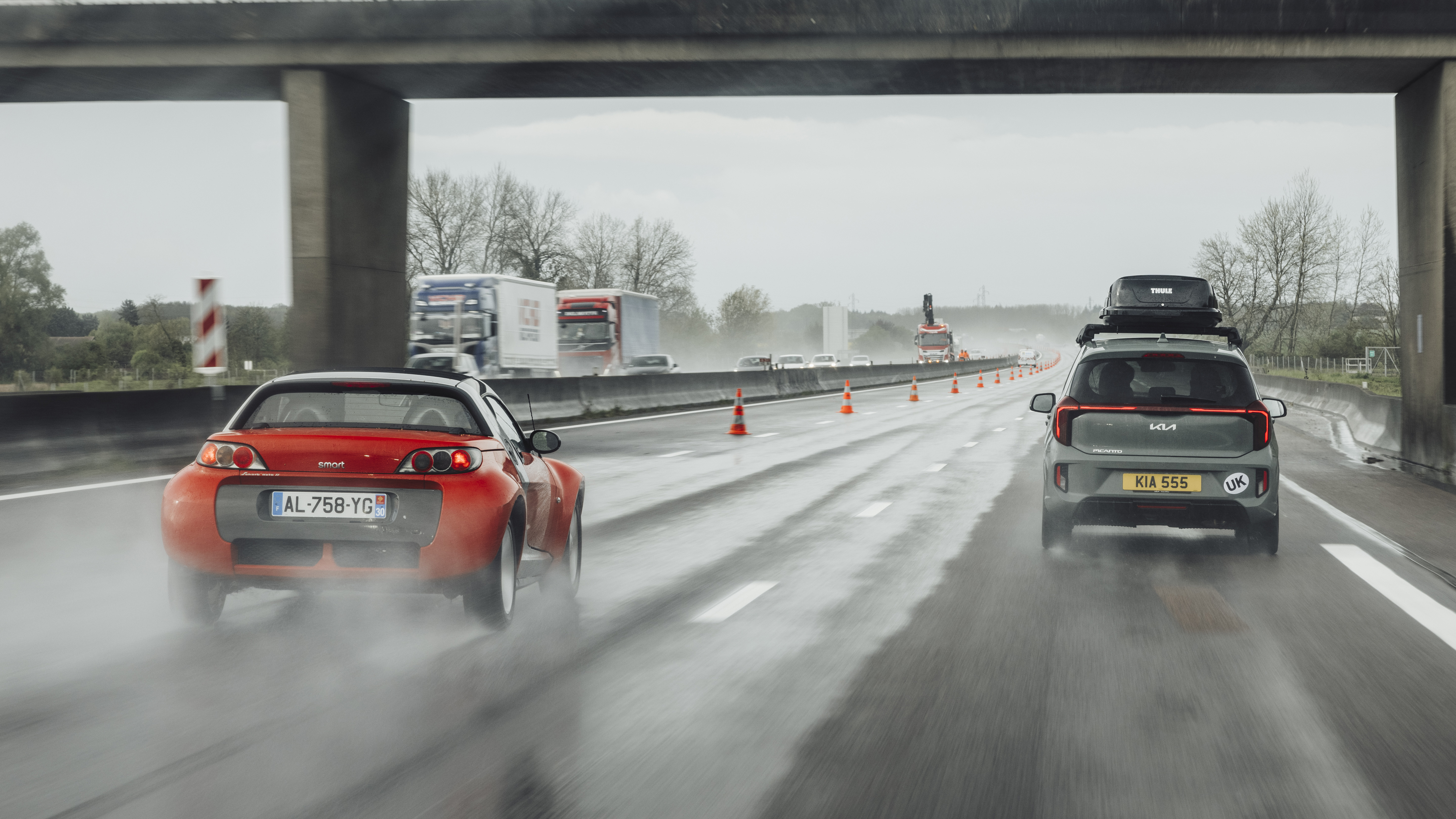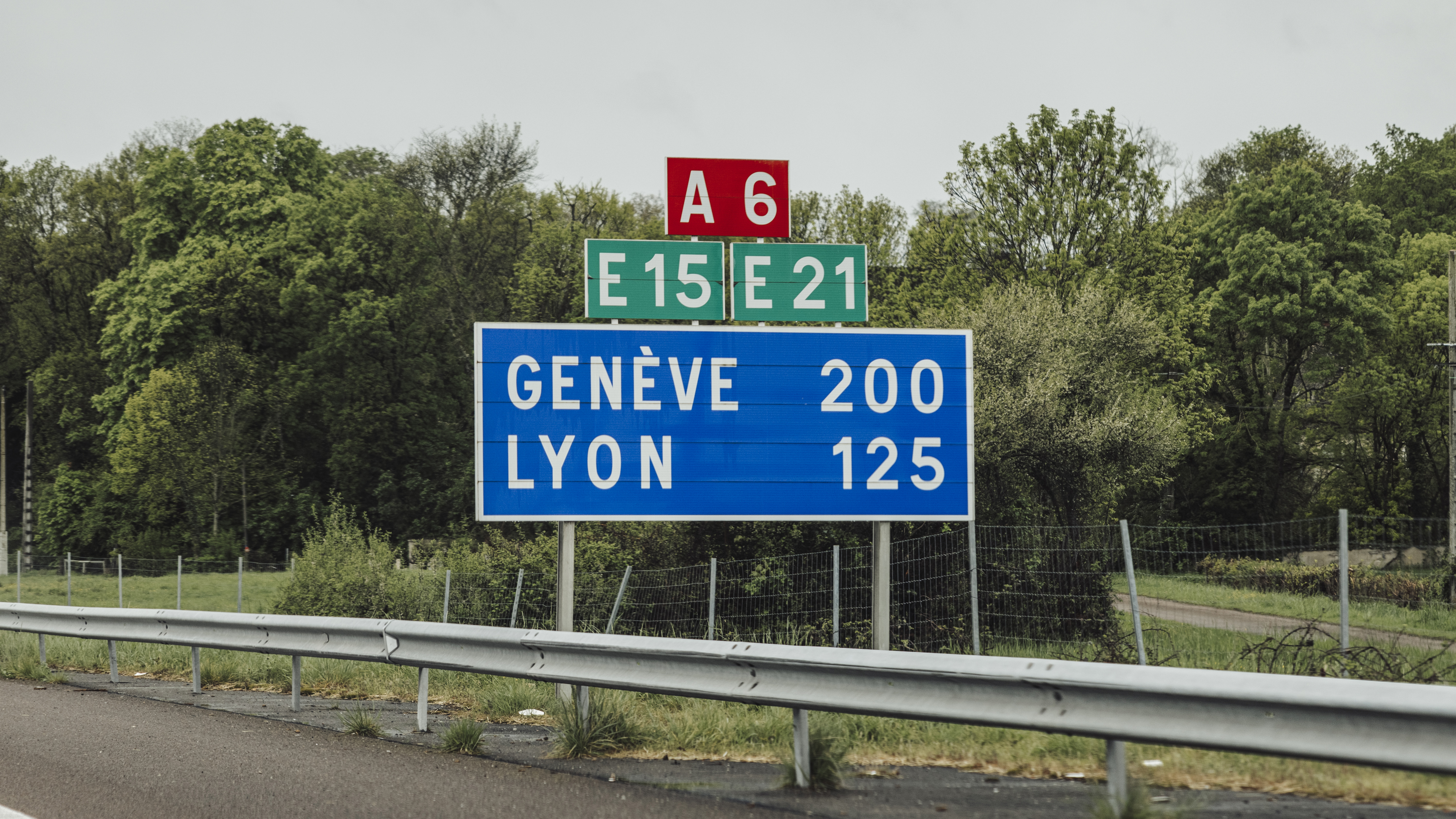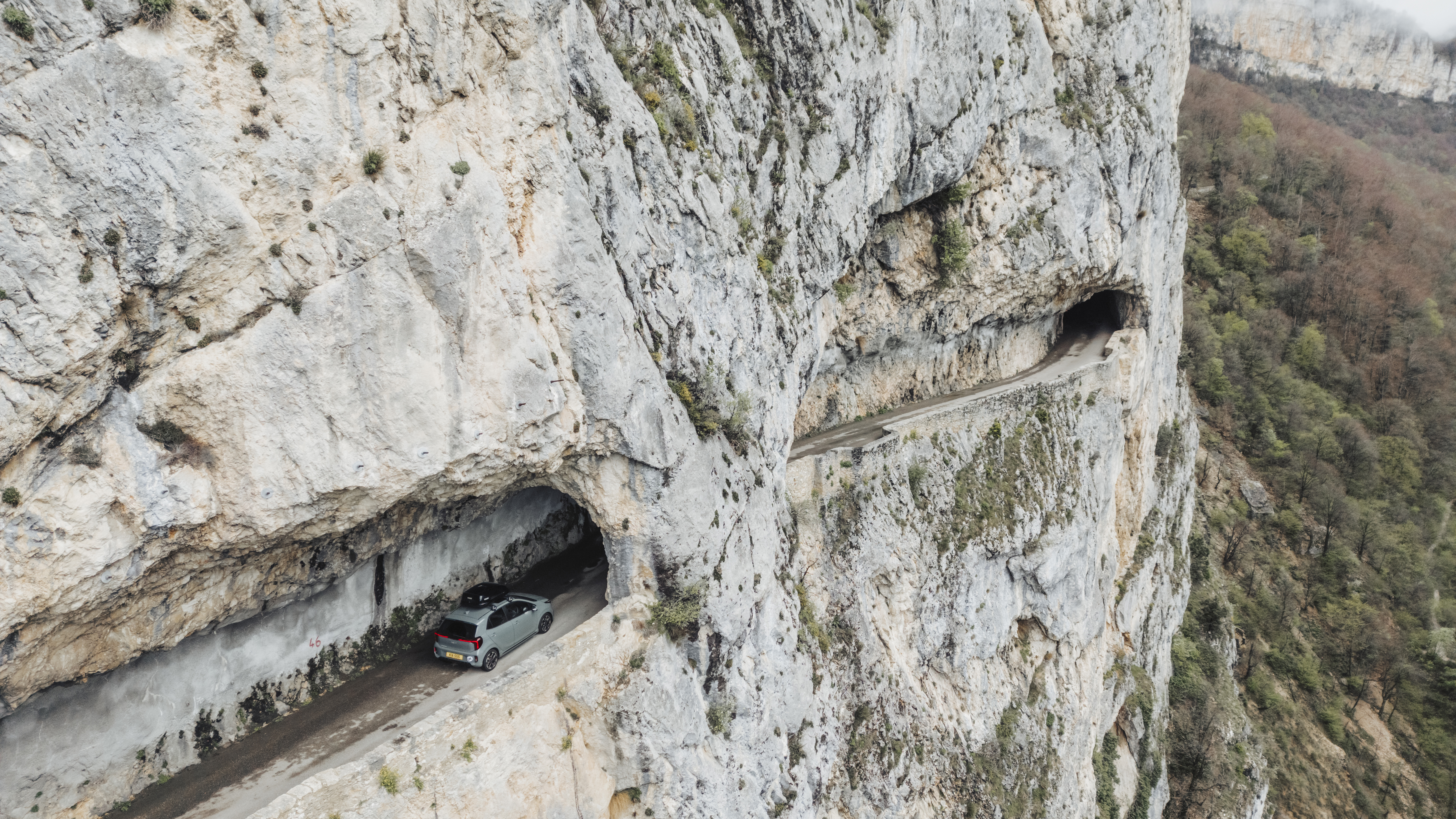
Is the small Kia Picanto the antidote to a world of big cars?
Just us or is everything getting fatter these days? Here comes the new Kia Picanto flying the flag for a leaner, simpler approach to modern life
It began as an idle conversation about what ‘small’ means when applied to cars, but it ended with my torso wedged into Europe’s narrowest street (and possibly the world’s... it depends on whom you ask), with a French man laughing, making circular motions around his belly and pointing at my midriff. Certainly not something one expects on the usual Thursday. But to get to the latter, we must first address the former. And it began in London, with a little, sorry ‘small’, car.
The car in question is a Kia Picanto, and therefore undoubtedly at the bijou end of the automotive scale. The kind you can park immediately without parking sensors or fish eyed cameras, ending up adrift in a sea of clearance in even the most modest of spaces. It has space for multiple humans – just about – a boot, all the accoutrements of a larger vehicle, albeit one with a modest 77bhp and a five-speed manual gearbox. Which is less than some bicycles.
This is the latest generation, sporting design cues from Kia’s more modern – and much larger – progeny, giving it the air of a kitten with overly large teeth. Cute, yes, but worrying. It works best in a city, scythes through the urban environment, plucking gaps from marginal leeway, laughing at width restrictors and those medieval car parks with spiralling ramps and alloy abusing kerbs. It’s... great.
Photography: Dennis Noten
Why is it so suited? Because life has got a bit... plump. Everything is bigger, fatter, extra. People, portions, places, prices, ambitions. The cult of go large. None more so than in the world of cars. Mid-sized SUVs the size of postcodes, large SUVs the size of counties, sports cars so wide they dwarf their ancestors with extra lard. Obesity as an epidemic, the UK’s average automotive silhouette morphed into a fatter, taller car with ground clearance cobwebbed from lack of use.
A genuinely little car feels like a cheat code in town. There are reasons, of course. Better, bulkier safety systems, crush zones and strength dictate the need for larger brakes, heavier suspension. Anxious people want security. And that’s before we even get into the murky waters of status or electric platforms. And yet there are holdouts. Good old fashioned superminis. And I’m here to make the case for them, before they all disappear in a wave of electric, plus-sized prices.
Thing is, we knew that the Picanto would be suited to London streets. ‘City car at home in city’ really isn’t a revelation. And so, after visiting a couple of London’s miniature sights, including the ludicrously narrow Emerald Court in WC1 – London’s narrowest street – and Crawford Passage, so narrow that the double yellow lines on either side are only an inch or two apart, plus the smallest police station in London in Trafalgar Square (it’s inside a particularly spacious ornamental light fitting, believe it or not), we sought more spectacular smallness, and headed out to France in a car not really suited to cross-continental roadtrips. To prove that small cars aren’t limited to cities. Seeking places only suited to the petite.
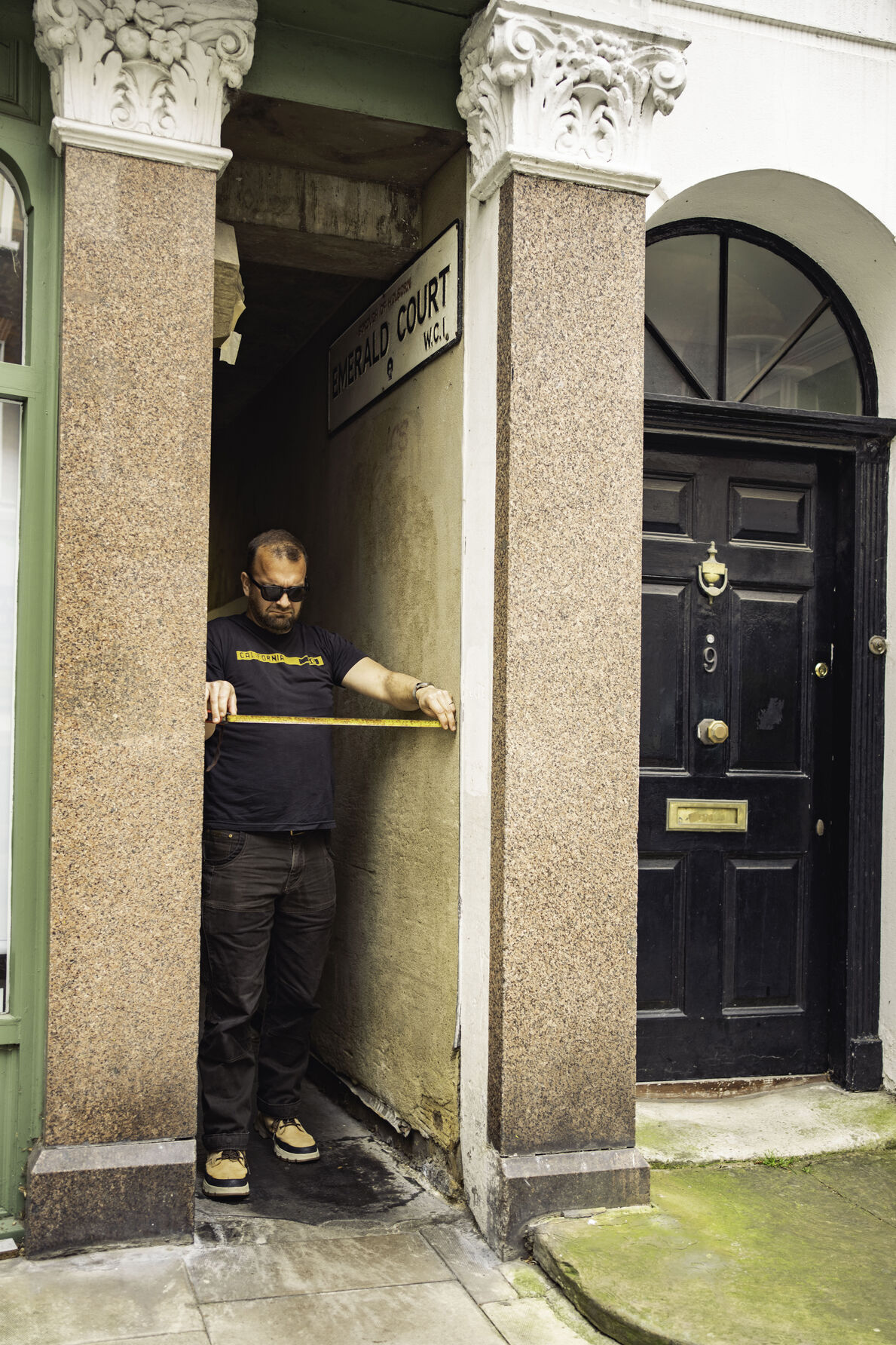
The autoroutes are not traditionally one of them, but the tiny Picanto – plus a rather fetching half-sized roof box for extra practicality points – proved its worth, steady and stable at 75mph even through several generous rainstorms. Not fast. Not capable of squirting past a line of traffic with a twitch, but quiet enough, not inconvenienced by a long and unsympathetic batter down Big Roads. A long incline might require fourth gear and many revs, but after a hop to Reims for an overnight, a heavy run down past Lyon to the Vercors Regional Park fuelled by fluffy croissant and bitter coffee, we aimed ourselves at the D22, convinced of a payoff. In the gorges du Nan, we found it.
The balconnette roads of France are probably familiar in the recesses of your brain, forever immortalised in various movies. But not many know that they stitch down through the southern end of limestone-bedded France like a geological lightning bolt. More familiar to cyclists, they’re not necessarily ‘great driving roads’ simply because they are generally unsighted, narrow and precarious. Unless, that is, you’re at the controls of something narrow. The base of many are typical mountain passes, pretty and wooded, roads scrunched together with hairpins that provide the altitude, scarred, fighting knuckles of mountains punched across the view.
But when you get to the balcony bits, they are jaw-droppingly spectacular. Legend has it that they were constructed along the sides of French gorges by brave souls who hung from ropes and lobbed dynamite at the cliff face before swinging clear, creating a ledge that was then hollowed out. The results of which derring-do became roads etched into the sides of cliffs, filled with short tunnels that vomit you out from sticky blackness into breathtaking views that fall away into river-cut gorges under stony cliffs.
Some are snapshot images as you duck from one tunnel to another, Victorian zoetrope views stuttering through the windscreen. Some feature longer tunnels where the shadows weigh thousands of tonnes, and every emergence a burst of sunlight and sight. None of them are anything less than glorious. They are not, however, suitable for anyone who fears vertical fresh air... there’s only a low wall on most keeping you from overly long final thoughts. But find one or two, and you’ll be compelled to seek out more. A pretty addiction.
They are not, to be extra clear, really that much fun to drive on in a performance sense. Most are so narrow that you’re constantly aware of possible oncoming traffic, of where the last passing place might be – and therefore where you may have to backtrack to in reverse. The smaller, less travelled ones are sometimes decorated with rockfalls, impromptu waterfalls and the odd hardy cyclist, calves bulging like cantaloupes as they inch to the summit. But they feel like adventure, and the complete antithesis of the practical, boring competence of the motorway.
Top Gear
Newsletter
Thank you for subscribing to our newsletter. Look out for your regular round-up of news, reviews and offers in your inbox.
Get all the latest news, reviews and exclusives, direct to your inbox.
Flick east, and you can investigate Le Bourg-d’Oisans area, the shadow of Alpe d’Huez, clipping back and down through the Écrins National Park and reams of pretty ski villages, linked by both short and long sections of balconette. Lunge through a bit of A-road, always heading south, and if you have time, just take random turns – there’s always seething potential in the backroads that most people miss. France being epic, in a familiar way.
![[node:field_carousel-themed]](/sites/default/files/styles/media_embed/public/2024/07/_14A3965.jpg?itok=jPIjbrv3)
But as fun as wandering is, we had more in mind. So we rappelled down to Sisteron on the banks of the Durance river via sketchy mountain backroads, and the gateway to Provence. It’s down here you’ll find more of the same kind of cliffside byways, but better known. The gorges du Verdon carved through the similar limestone of the Alps/Côte d’Azur, 700 metres straight down and only a couple of hundred metres wide in parts. And the balconettes surround it, easy meat for the plucky little Picanto, gamely flinging itself up the contortions of the D952 and D23. It’s big country, but the Kia fizzed its way up and through undaunted.
In fact, in a car like this, there’s a sense of a grand day out, taking in the views without the adrenalised tunnel vision that comes with a fast car. You process the scenery rather than just the road, become more involved rather than less. It’s endless fun, simply because you’re not absolutely terrified of popping out of a tunnel and finding another car coming the other way on a road only one and a half cars wide. Wing mirrors are not in danger. Life is less stressful.
Of course, on the wider runs down the back side of the mountains towards the sea, the roads are better, and you do miss something with a little more power, a touch more grip, a bit more. There is no real powerband to mine in the Kia’s modest 1.2-litre engine, no deep seam of torque to haul you from a mistimed gearchange, no easy cliche to bolt superlatives to. Screw this up, and you all but stop, some of the steeper hairpins actually requiring first gear.
Small cars democratise access to lightly epic roadtrips
But there’s also something utterly joyous in trying to coax the most speed out of a willing but underpowered car. And lightly terrifying about getting so confident that it scrapes the front valance on the downslopes and bicycles its way on two wheels around tight corners on uphills. Maybe the bags in the roof box are a little too heavy. But there’s joy in lightness and simplicity in ease. This isn’t a car that attacks a road like it hates it, leaving bruises on the corners. It’s more sympathetic than that. And after several thousand miles, it feels even more appropriate.
The latter bit of the Route Napoléon on the D6085 is reliably awe inspiring, and yes, the go faster itch really burns on those sweeping turns, even using every single one of the 77bhp. But still the little Picanto impresses. It’s remarkably resistant to understeer thanks to its sub-tonne kerbweight, the clutch, brakes and steering all deliberate but light. It’s not a taxing car to drive, and despite the frowny face is about as intimidating as a big bag of cotton wool. Caution though: uphill overtakes of logging lorries are glacial, must be well planned, well sighted and prepared to commit.
Eventually though, the balconettes are behind us, and the sea before. A quick trip along the flashy coast into Saint-Tropez to see some yachts whose RIB tenders dwarf the little Kia, and on to Gassin a few minutes down the coast for the finale of our pointless quest. And it’s in Gassin that we find it, the Picanto’s nemesis – L’Androuno. Possibly the narrowest passage in the world.
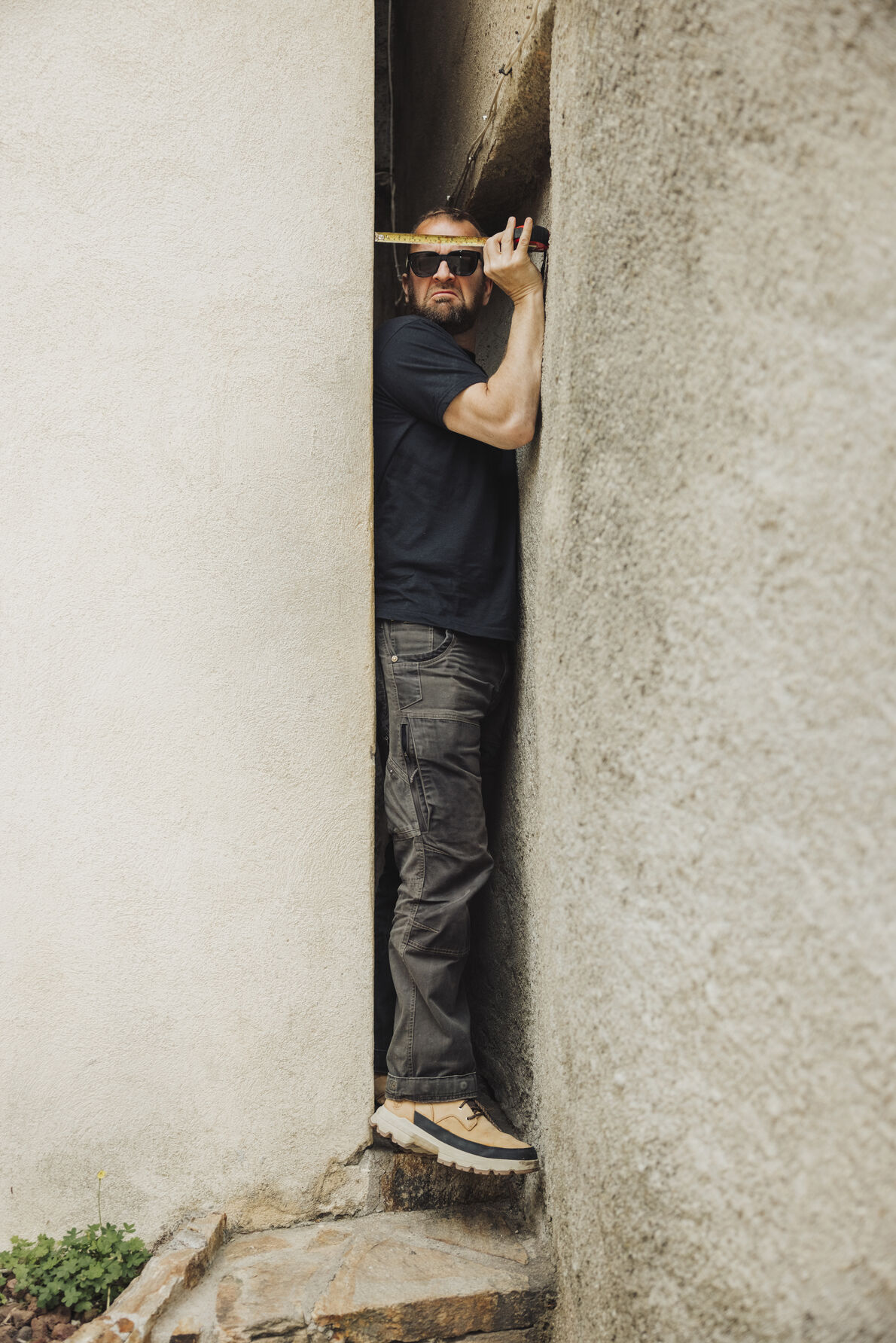
It’s an official street that not even the slimline city car can attempt – at the narrowest point, 290mm. Somewhat less than the length of my feet. It’s named from the Latin andron, itself derived from the Greek word for ‘men’, characterised as an uninviting alley and therefore reserved for males. But it’s also been described as variously a narrow passage to prevent attacking forces using horses, a ‘hiding place’, or... a latrine. So I stuff myself in the gutter of L’Androuno and take a picture, not quite stuck, but definitely brushing the plaster from the walls.
Which brings us neatly to the idea of what ‘small’ really means, and why it’s important. The Picanto is one of a slowly dying sector of little petrol cars, which aren’t as cheap as they used to be. A base version now costs just over £15,500. Sounds expensive? The new GSR II rules (General Safety Regulation) implemented in July 2024 dictate that small cars now need some 20-plus safety systems onboard, including advanced emergency braking, black box recording (really), intelligent speed assistance, emergency lane keep and the like. Safer cars with big car features, but at a cost. The Picanto will still be one of the UK’s cheapest new cars, equipped with everything it needs and more, but it’s not pennies.
So ‘small’ ends up mostly about context. But a real car that is truly small in all aspects – dimensionally, low power, low cost (in relative terms), low stress – is to be cherished. Small cars might not be the best at everything, but they’ll have a go at anything, and they democratise access to lightly epic roadtrips. The Picanto is Kia’s second bestselling car. There’s demand across Europe for small city cars, but manufacturers are culling their numbers in favour of much bigger ‘small’ SUVs. And that’s a shame. Because simple can be good. Small can be capable. And if nothing else, cars like the Picanto prove that Big Adventures don’t need big cars. They just need the will, and a way.
Trending this week
- Car Review
BMW iX3







